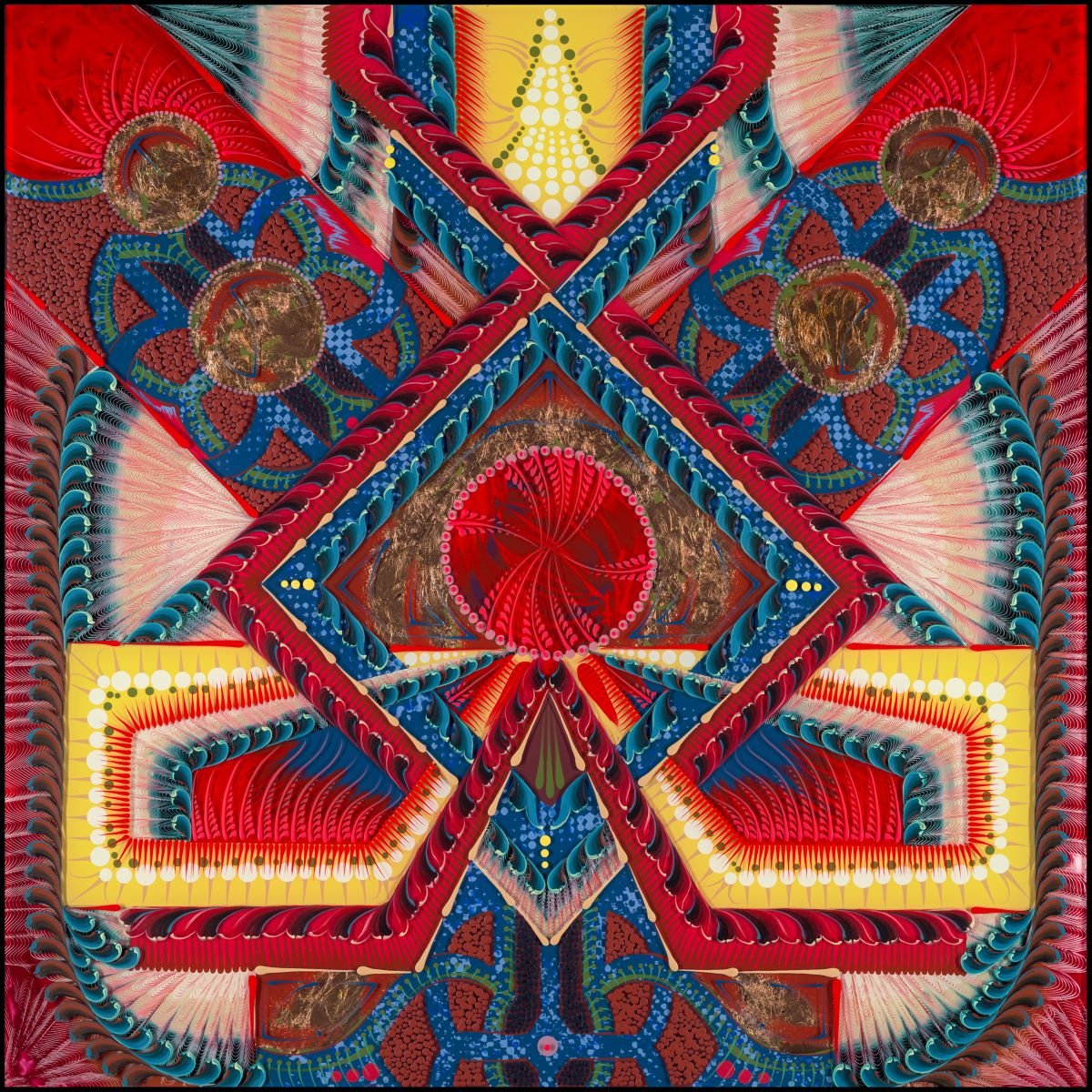The Power of Abstraction
Juried by Alexandra Terry
Curatorial Statement
“Abstraction is a run-on sentence.
It asks but doesn’t answer.
It is an invitation to an unknown place.
It causes one to dwell in rather than to know.
To think in abstract terms is to think outside of the mainstream, to think for oneself.”
Maja Ruznic: What is abstraction?
The Brooklyn Rail, 2024
Abstraction wields immense power, evident in the diverse works showcased in this exhibition. Artists working today have access to a multitude of materials, tools, and platforms, enabling and expanding their unique interpretations of abstraction. However, material and technological advancements have not necessarily made discussions about abstract art easier; instead, they highlight abstraction’s particular ability to disrupt conventional understanding.
Historically, much of the world’s art has been abstract. From Islamic mosaics to Pueblo pottery, geometric designs have articulated the fundamental expressions of various civilizations. In the early twentieth century, abstract artists aimed for reduction to strip away artifice and subjectivity to reveal what is essential. This process of reduction did not equate to simplification. Mondrian argued that abstraction is not a means to simplify something but rather to intensify. Decades later, art historian Kirk Varnedoe emphasized, “The less there is to look at, the more important it is that we look at it closely and carefully [...] Small differences make all the difference.”
For a time, this reductive approach was seen as a great equalizer, making abstract art accessible to a broader audience. Without the burden of historical narratives and religious iconography, viewers were not required to possess specialized knowledge to engage with the work. However, abstract artists have increasingly sought to explore deeper and more nuanced meanings. While abstract art may be formally reductive, Peter Halley noted that it still reflects larger historical and cultural dynamics, gaining significance through its embeddedness within these contexts.
Despite its rich potential, abstract art is often perceived as challenging to understand, leaving many viewers feeling excluded. If we struggle to interpret works devoid of recognizable symbols, we might also doubt our capacity for self-reflection. As artist Maja Ruznic observed, abstract art has the ability to destabilize the status quo, which might be its greatest strength: its ability to make us uncomfortable. Embracing abstraction means confronting this discomfort, allowing us to use it as a tool for deeper examination of ourselves and the world around us. The ‘Walls’ created here offer six distinct entry points into the methods and conceptual ideas that collage and assemblage works afford, as well as to the art histories associated with them. Many of the artists mentioned and involved in each of the entry points could very well overlap into others, as the work operates more fluidly with cross-references constantly coming up. – Alexandra Terry
Wall 1
Adria Arch / Steffani Bailey / Decheng Cui / Lydia Dildilian / Maki Hajikano
Off the walls and into space, these artists extend their work beyond the surface to create sculptural abstractions. By layering up, cutting out, piling on, and folding over, 3D compositions are created, challenging our notions of what abstraction can be.
Wall 2
Tara Austin / Jason Hoelscher / Daisuke Kiyomiya / Marc Mitchell / Hannah Timmons/ Leticia Wouk Almino
Found throughout nature, geometric shapes have been understood by many to have exceptional powers. Here, hard lines and geometric systems have been employed to explore modernist elements, architectural structures, visual codes, and material planes.
Wall 3
Margaret Jo Feldman / Elizabeth Hartley / Carol Hausser / Xiaodong Ma / Nica Moura / Michael Rohde
Blurring boundaries, the works seen here explore human crisis, civic structures, and relationality through an abstraction that nearly becomes representational.
Wall 4
Jimin Baek / Amanda Michele Brown / Douglas Collins / Patti Robinson / Nina Temple / Ling-Wen Tsai / Jenny Wickens
These investigations into the principles of painting encompass auras, fields, blocks, and splotches of color. Sensual visual symphonies accommodate spaces for reverie and contemplation.
Wall 5
Eva Bovenzi / James Eli Bowden / Anna Child/ Katy Hernandez Dorsey / Carl Jennings / Christoper Rose
Examinations of color and composition are applied here through both hard-edge and gestural mark making. With layers that complicate and obfuscate a simplified viewing, we are pulled into a depth of imagined worlds.
Wall 6
Allen Ball / Paula Elliott / Robyn Frank / Hannah Freeman / Denver Gacayan / Isadora Gullov-Singh / DM Witman
Dreamy, moody, and transcendental, these works not only demonstrate expressive emotional states, they explore the texture and character of pictorial space.



























































































































































